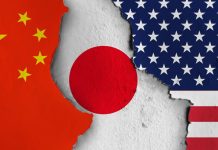BY Dr. Sahibzada Muhammad Usman
Pakistan and China are becoming more connected in the areas of science and technology, higher education, and information technology. This gives the people of both countries more chances to get closer and makes this friendship even stronger. The partnerships in these areas during the past decade have been excellent, but there is still much room for expansion, particularly in the science and technology sector.
China is eager to impart advanced Aerospace Engineering and Artificial Intelligence technologies to Pakistan, which might alter the country’s science and technology industry. However, western countries were not eager to give Pakistan new technologies, while China is very responsive to Pakistan’s needs. In Haripur, Hazara, the Pak Austrian University of Applied Science and Engineering was started with the help of five Chinese institutions. This is one of the newest projects in Pakistan with China’s help. Moreover, the Pakistan China Center of Excellence in Artificial Intelligence is being developed at Karachi University with Chinese funding. A second center for hybrid rice and vegetable seeds was developed at Karachi University. The National Center for Virology was made by the Wuhan Institute of Virology in China and the International Center for Chemical and Biological Sciences (ICCBS).
China and Pakistan’s proximity has led to expanding collaboration in different fields. The all-weather allies recently agreed upon three additional pathways, including the China-Pakistan Digital Corridor. Pakistan’s prime minister, Shahbaz Sharif, was one of the few leaders summoned by China to the Communist Party’s 20th National Congress to discuss the “revitalization” of CPEC. The relationship between the two states is interdependent and mutually beneficial. The digital corridor aims to get help from China in making software, building up Pakistan’s IT industry, and training and hiring people. Even if Pakistan’s Information Technological (IT) industry has just reached its peak, the digital corridor will contribute to developing a world-class technology environment.
Previously, the IT industry in Pakistan faced various obstacles, including untapped talent and trained labor, low-quality internet access, a dearth of training centers, and a disregard for start-up culture. Even though there have been some problems, Pakistan’s IT services have grown a lot in the past few years. According to the Economic Survey of Pakistan 2020-21, the compound annual growth rate for IT and IT-enabled services reached 18.85%, the highest of any industry in the state. In addition, Pakistan generated 199 million USD from IT exports to foreign nations in the first month of the fiscal year 2022-23, an increase of 1.58 percent compared to the first month of the fiscal year 2021-22, according to the Pakistan Bureau of Statistics.
China continues to dominate Pakistan’s bilateral cooperation in the technology industry. The Cross Border Optical Fibre Cable project of CPEC is expected to enhance Pakistan’s Information and Communications Technology (ICT) and telecommunications industries. It also intends to meet the two nations’ rapidly expanding internet traffic demands.
Consequently, the China-Pakistan Digital Corridor affords new chances. Under this effort, China would establish Pakistani training centers to utilize its abundant human resources and IT skills. This would contribute to the development of Pakistan’s IT sector and economy. Also, the Chinese organization Shenyang Economic and Technological Development Area (SEDA) and Pakistan’s Special Technology Zones Authority (STZA) have signed a statement of intent to work together more in the technology sector. So, the digital industry is a new way for people to work together in the future to digitalize and improve technologies.
There is much to learn from China’s economic miracle and IT sector expansion. Sixty-four percent of Pakistan’s population is under the age of thirty. Most of the state’s population is digitally savvy and possesses the technical abilities necessary to expand and globalize the technology industry. Cooperation with China will lead to a skilled workforce that needs to be well-known and training opportunities for people with IT potential. Moreover, because China and Pakistan have a mutually beneficial relationship, China’s interests are also beneficial. On a special occasion, Amer Hashmi, who is the chairman of the STZA, said that Pakistan’s technology gives Chinese investors and business partners opportunities that are competitive around the world. Pakistan’s leveraged position is significantly affected by its demographic advantage. It is also a major hub for Chinese companies doing business in the Middle East, Central Asia, and Africa, which is another benefit of its location.
For Pakistan, the success of the bilateral initiative will be a game-changer. It would make it more likely that Pakistan’s IT industry will keep integrating and becoming more competitive worldwide. China is investing in Pakistan to cultivate and utilize the country’s talent pool, which may lead to the manufacture of cutting-edge technology and assist in software development. Pakistan’s current IT environment is firm ground, and a new digital corridor will catalyze the sector’s further development.
Nonetheless, Pakistan must resolve a few problems before embarking on this trip with China. First, the state should address obstacles caused by internal political instability and other IT-related issues, such as internet speed, taxes, and e-commerce barriers, which might impede the flow of goods and international investments. Priority should be given to only product-focused businesses with global relevance. Lastly, Pakistan should properly acknowledge and interact with the talent pool devoted to spending its time and energy in the IT industry. Pakistan trails behind in four of the six indices of talent competitiveness: enable, attract, expand, and retain. It must recognize that educating and maintaining personnel are essential to the IT industry’s long-term prosperity. Consequently, Pakistan has many opportunities to unleash the exponential growth of its IT industry and exports if the aforementioned issues are taken into account and the digital sphere is restructured thoroughly. As a consequence, the digital corridor would also pave the road for Pakistan to become a financially stable nation.
About Author:
Dr. Sahibzada Muhammad Usman
Research Scholar and Academic; Assistant Professor in the Department of Strategic Studies at Air University, Islamabad, Pakistan. Ph.D. in Political Science at the University of Pisa, Italy. Dr Usman has participated in various national and international conferences and published 30 research articles in international journals.






